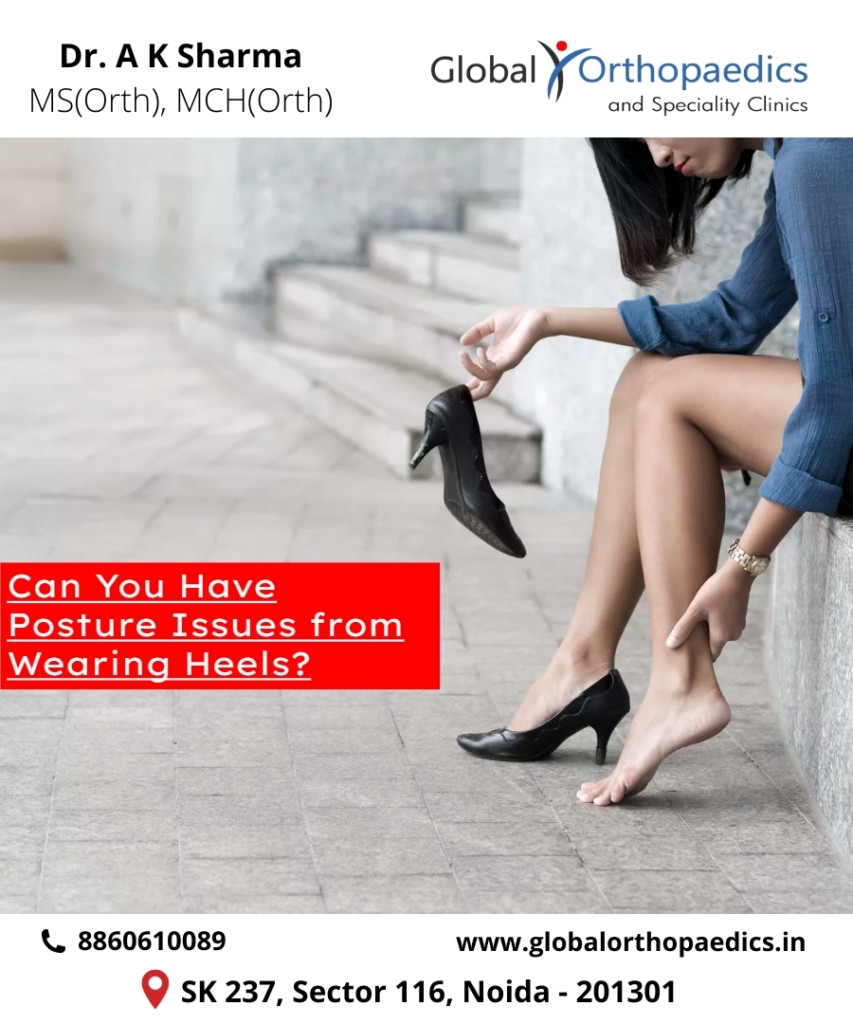It’s the end of the week, and you and your friends are going to dance the night away, so you get to wear your newest purchase—4-inch heels that you found at a fantastic discount. You can already tell that you’ll be hurting the next day since by the end of the night, your feet will hurt. But you say that’s worth it since that’s the cost of fashion? Are you aware that the harm you’re causing to your body extends well beyond your feet and that a little bath in warm water won’t be sufficient to fix it?

When we stand straight and wear flat shoes, our body alignment is at its best. Your body weight is properly distributed throughout your feet and body, your calves are relaxed, and your spine is nearly straight. The middle of the foot is where our center-of-pressure (COP), or where most of the weight is distributed, is located. The body is 90 degrees at a right angle to the floor.
If our body were a hard pillar, wearing high heels would cause us to lean forward. An angle that is less than 90 degrees is more sharp the higher the heel. However, because the human body is an anatomical marvel composed of muscles, tendons, and joints rather than a stiff pillar, it naturally adjusts its position to offset the alterations.
What physical effects may wearing high heels have?
Upper body: The center of gravity is raised by wearing high heels. Your body may get raised from wearing high heels, resulting in joint reajustments. Our upper body adjusts in response to this change in center of gravity by thrusting the pelvic and posterior, pushing the chest outward, and arching the back.
Lower body: When we wear high heels, our legs appear longer and have more defined muscular tone. As we previously established, our stance when wearing heels is acutely angled. Our Achilles tendon shortens to fit the slope, which causes our calf muscles to flex, giving the appearance of being lengthy and muscular. 70% to 80% of your body weight travels forward when the COP moves from the middle of the foot to the ball of the foot. Your metatarsals, or toe bones, as well as the tendons and ligaments that surround them, weaken as a result.
The best orthopaedic doctor in Delhi NCR at Global Orthopaedics and Speciality Clinics, Dr. A K Sharma, states that “If you choose to or are required to wear heels, take into consideration the following suggestions:
– Prior to and after wearing heels, stretch your muscles. Stretching should be done for at least 20 minutes, with special attention to the lower back, hamstrings, calves, and feet.
– Try to keep your heels to no more than two inches.
– Steer clear of wearing heels all the time. Even when you’re out and about, take breaks to sit down, and if you have to stay standing, always have a change of flat shoes on hand. Make sure you wear them for no more than three hours at a time.


